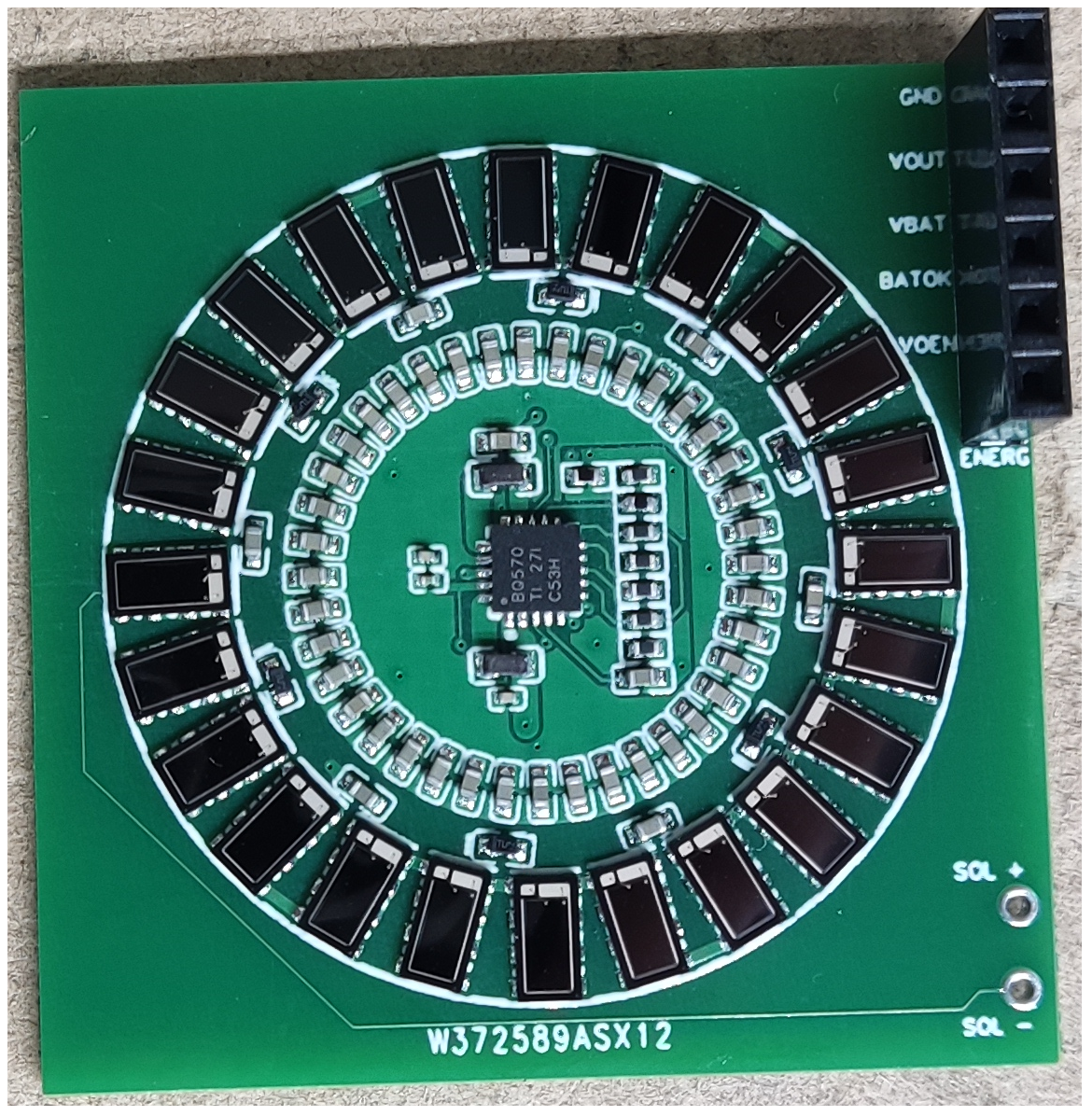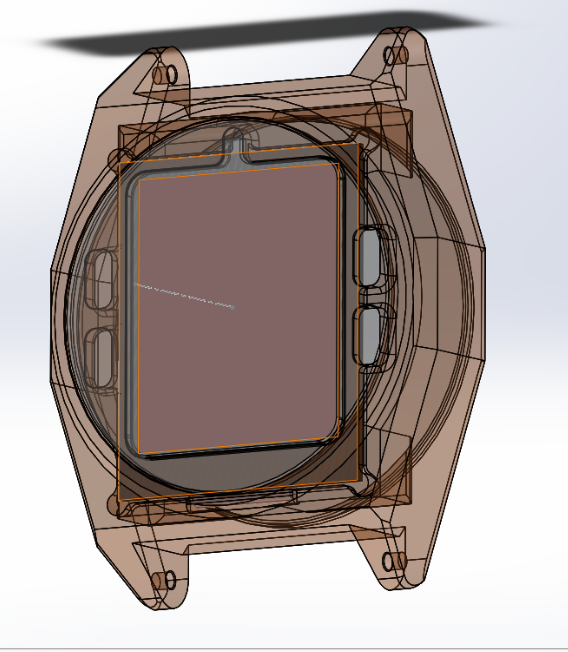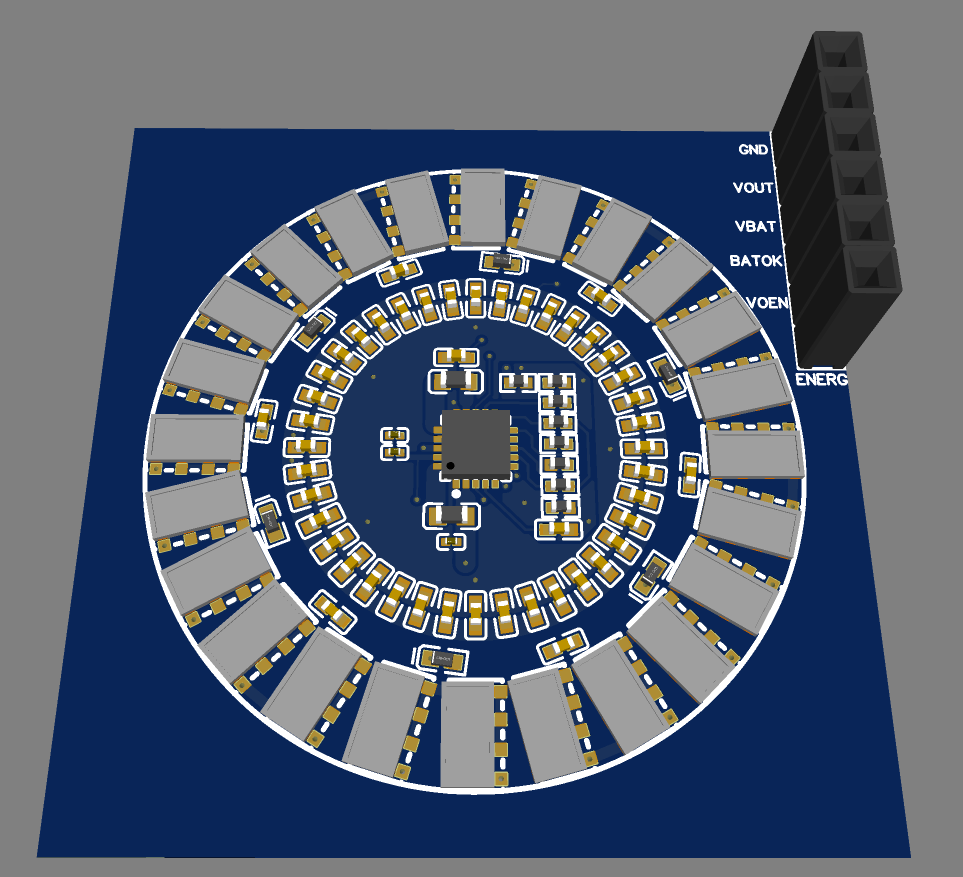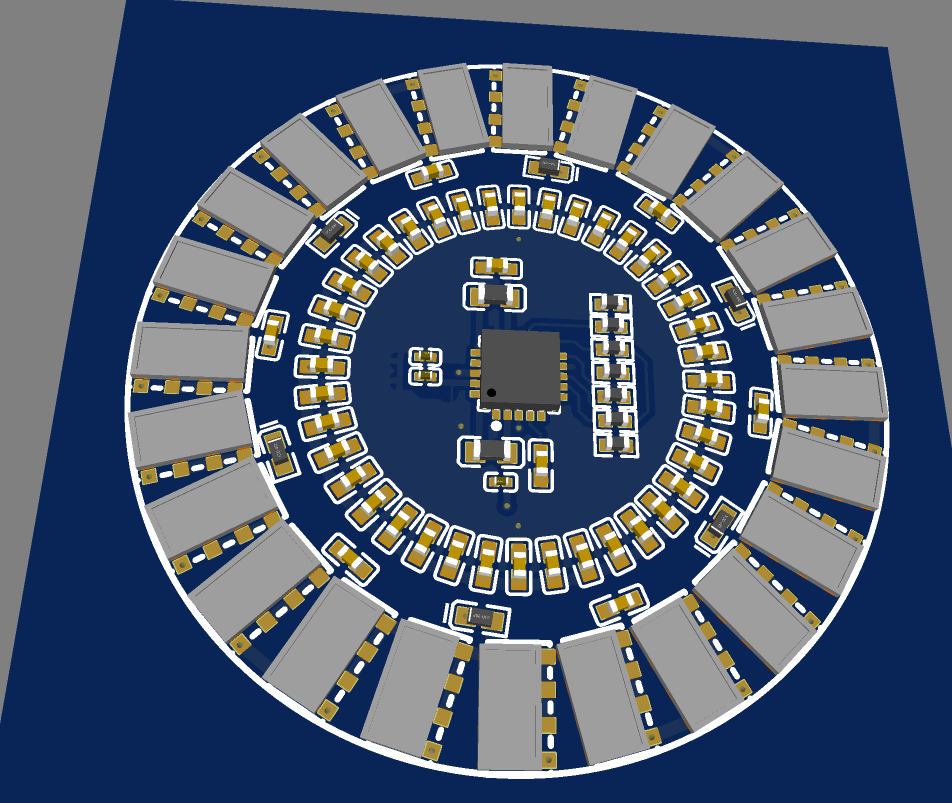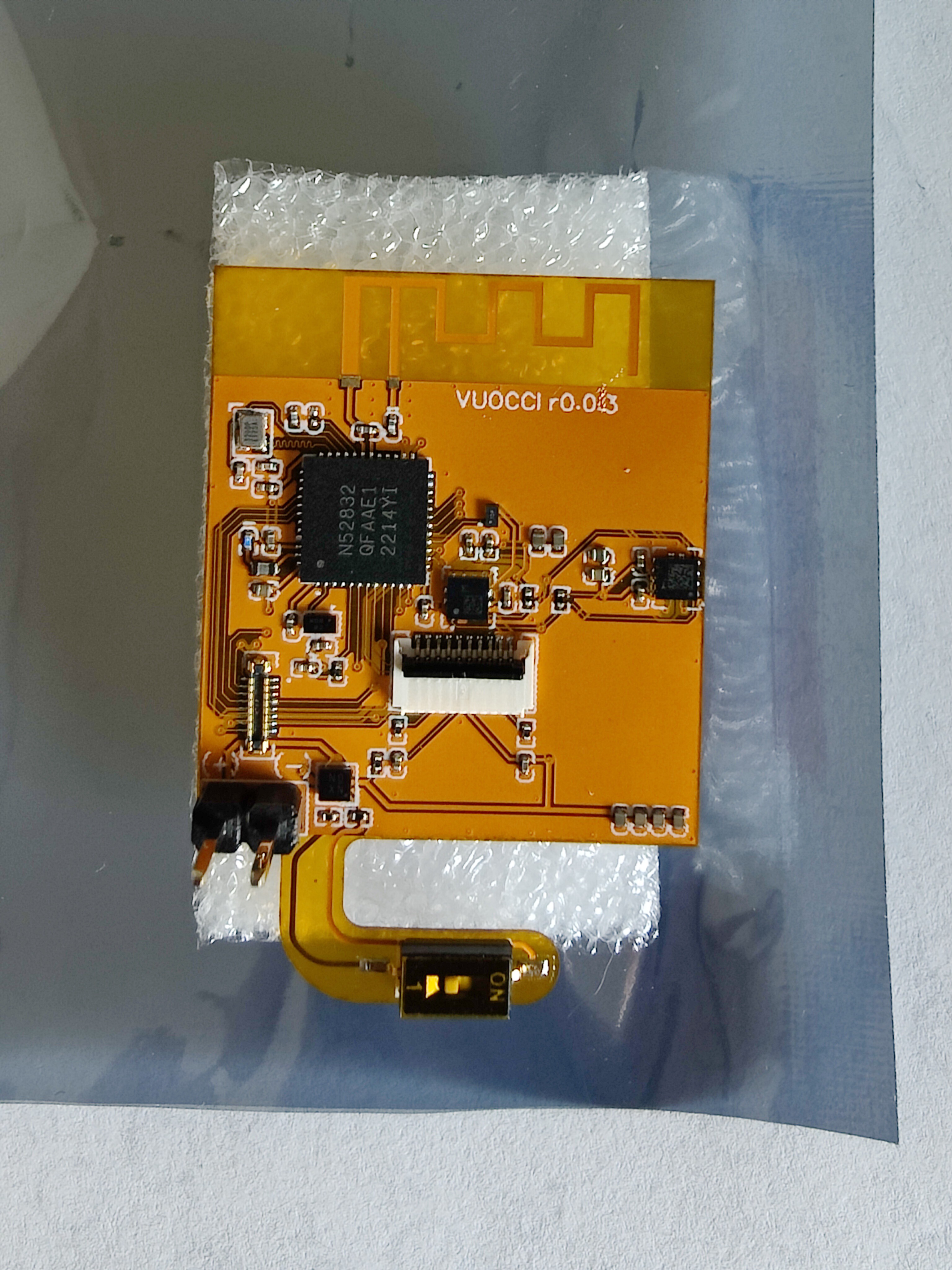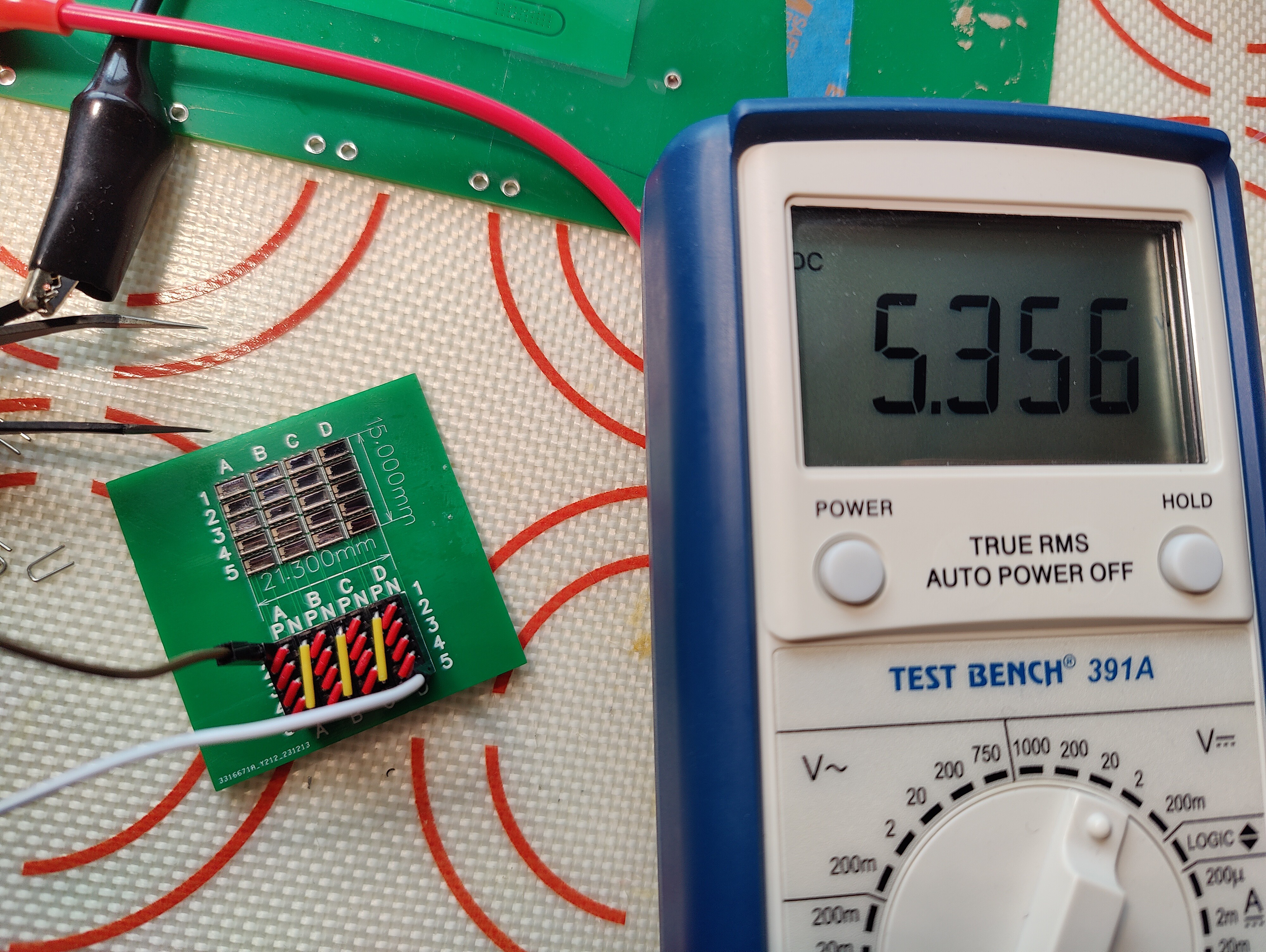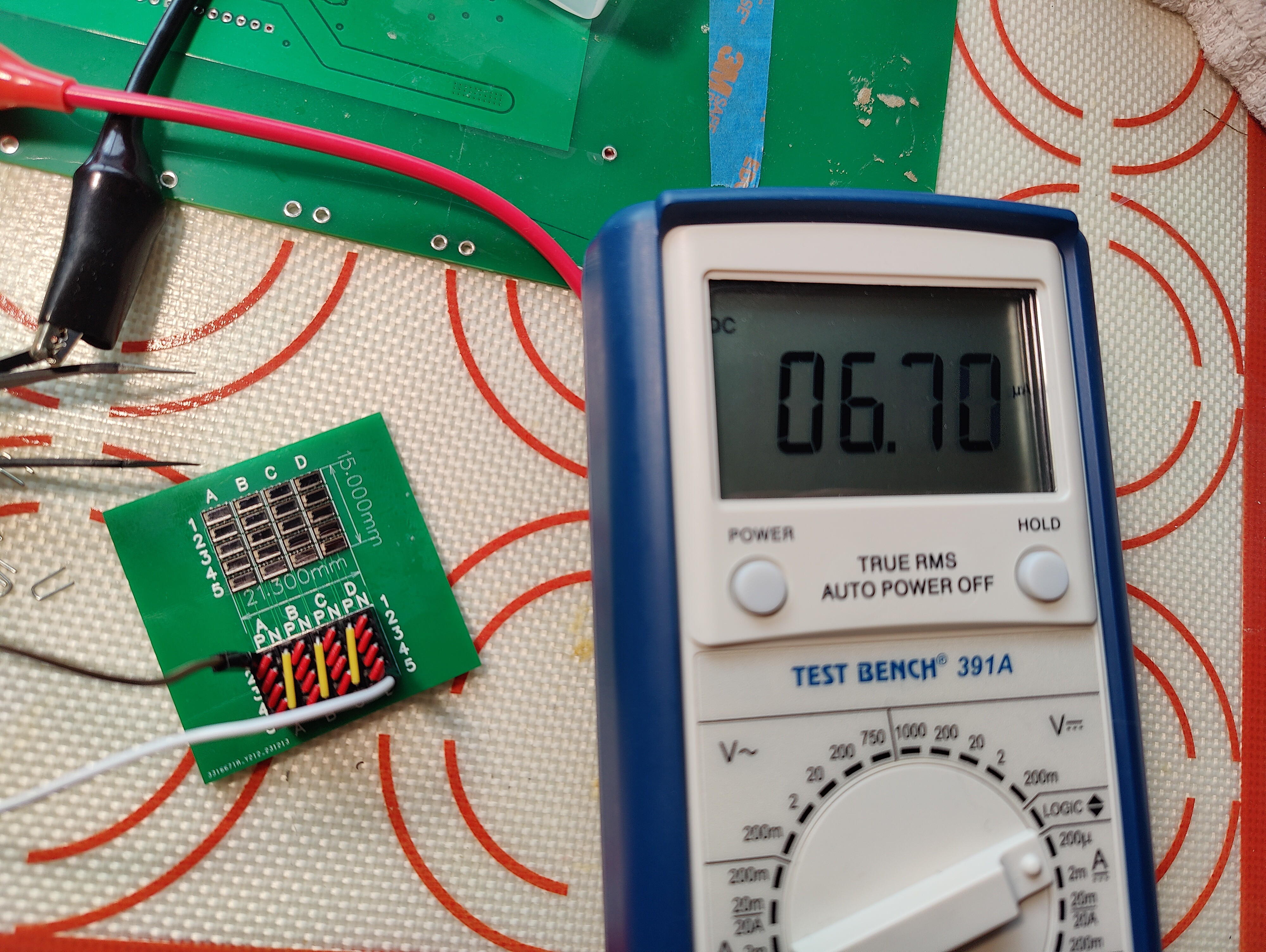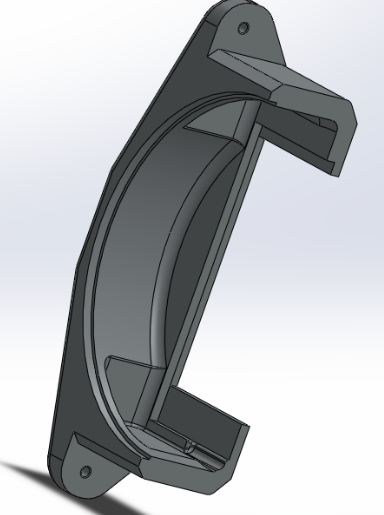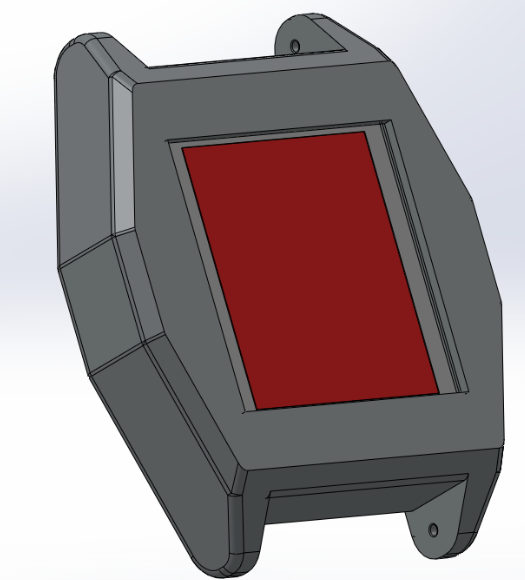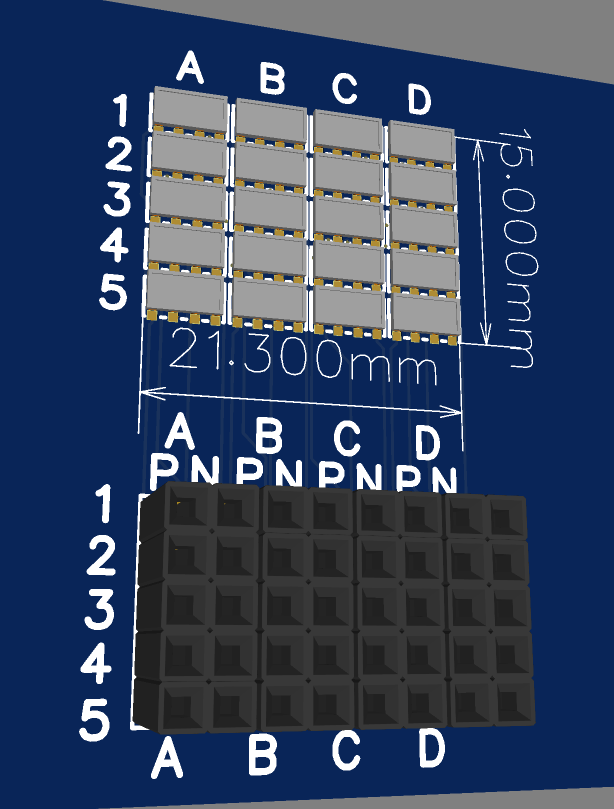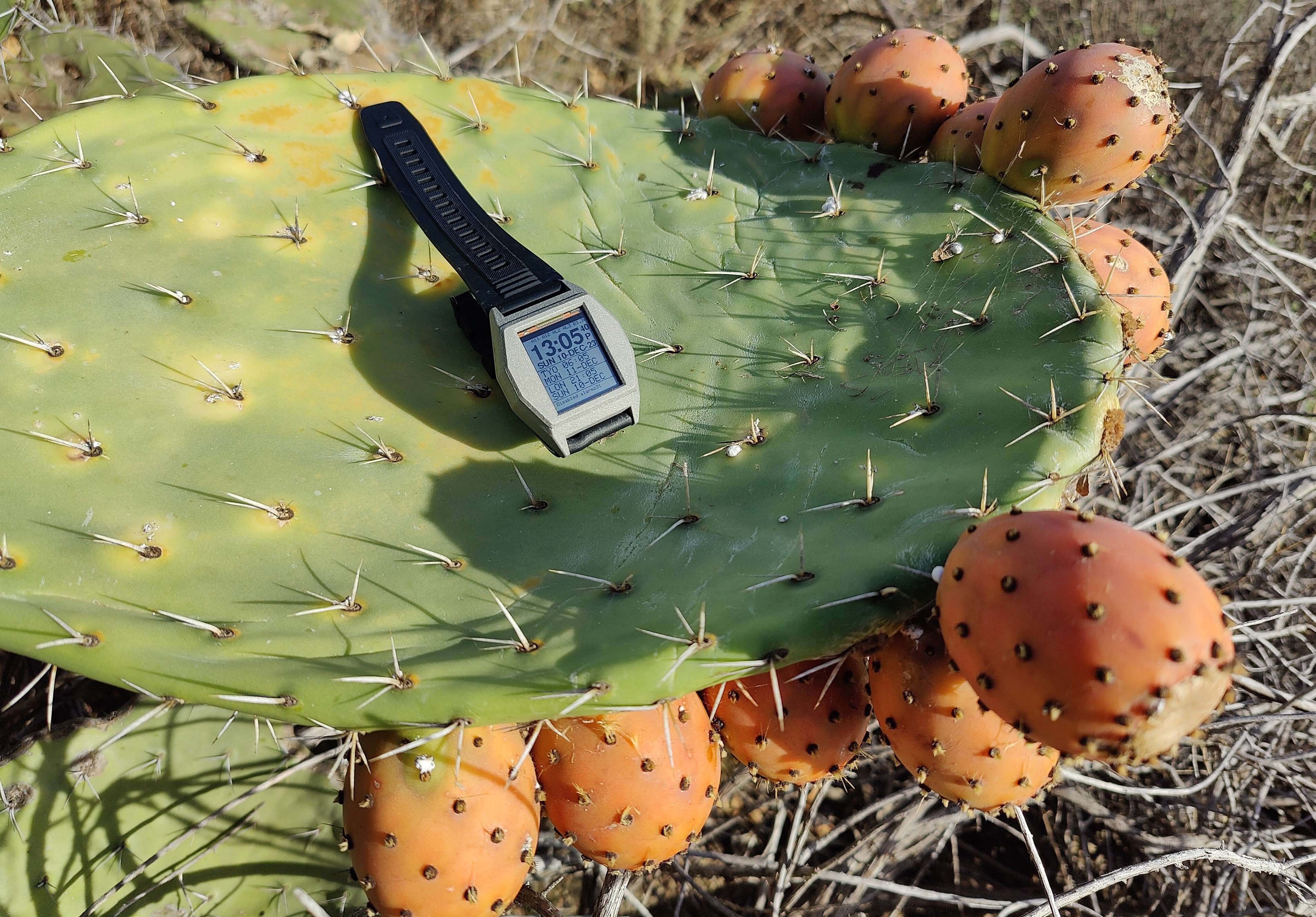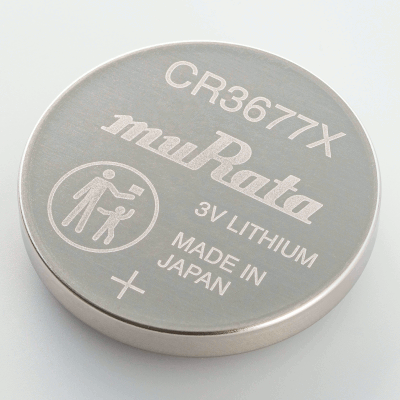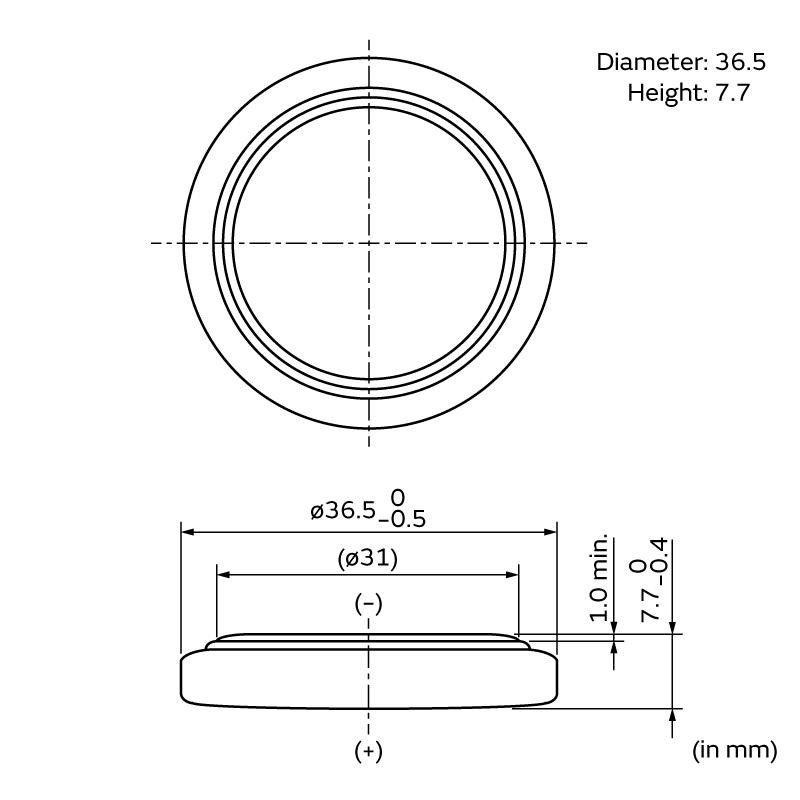-
Powerplant dev board
01/11/2024 at 15:51 • 0 commentsThe POC powerplant dev board is here, will test soon.
-
Case re-design
01/05/2024 at 20:56 • 4 commentsGot some time today, worked on the case redesign.
-
Energy Harvester Powerplant Progress
12/31/2023 at 18:16 • 0 commentsFinalized the energy harvester dev board.
Will manufacture after New Year.
Cheers!
-
Energy Harvester Powerplant Progress
12/31/2023 at 01:08 • 0 commentsSome work done on the energy harvester. This is really complex. I wanted to finish in a couple hours, however, it seems it will take a day.
-
Main Board R003
12/29/2023 at 18:42 • 0 commentsThe R003 of the main board is here!
Thanks to PCBWay for sponsoring the board. It was not cheap, about $300, thanks PCBWay!
I will start testing soon, and post progress.
![]()
-
Light Harvester Powerplant
12/29/2023 at 18:18 • 0 commentsThe light harvester development board is here!
The full micro-panel delivers about 5V @ 10uA = 50 uW on a cloudy day behind a dual-pane window.
The same panel delivers 10V @ 1mA = 100mW on an average sunny day outdoors.
This means a 3V @ 100mA (300mW) battery can be fully re-charged in a few days of sunny exposure, or maintained at a state of charge in a normal office environment.
A lot more work needs to be done to properly design a circuitry to accommodate partial shading and dark current, however, so far the powerplant basic premise is a total success!
-
Case design
12/16/2023 at 03:22 • 0 commentsHad a little free time today. Case design is a big and very important consideration, so I had to completely rework it to fit the new PCB, sensors and battery, leaving the door open for energy harvester.
The case turns out to be really complex. Never done watch design before, this is highly non trivial. Too bad I don't have enough time to get a good prototyping effort, but one thing at a time.
-
Light Energy Harvester
12/15/2023 at 01:00 • 0 commentsWhile waiting on certain components to get manufactured and arrive, I also started work on a branch of the design for later. This is the beginning of a development board for light energy harvester. I would collect any light and run through a harvester IC, then use this for a battery charger and watch power management. I would like to very carefully avoid using the word "solar" as this is not a solar charger, but any light, including artificial indoor lightning. BQ25570 seems like a good candidate.
The photo elements generate 33uA (0.000033 A) current from a 1mW/cm2 light energy. I have currently 20 high-efficiency photo-diodes on a 15 x 20mm area on the board, and planning to add another 4, for as total of 24 in the final design. In other words, in average lightning condition the harvester will generate 0.6mA for each 1 mW/cm2. Putting things in perspective, the intensity of bright mid-day sunlight on the equator is about 130 mW/cm2, or over 100 times more powerful, and this will generate an astonishing 85mA current, enough to charge a 100mAh watch battery in a about one hour. That 100mAh battery could power the smartwatch for one year, so this is a complete game changer.
Once fully developed, the watch will be powered by once-a-year exposing it to bright sunlight for a few hours. Or alternatively just wearing it daily on your wrist while the watch sucks in ambient light. The cornell-dubilier batteries have a capacity of 500mAh, and could power the watch for 5 years under normal usage to full depletion.
Without going through a full literature review of the lithium-nickel-manganese-cobalt-oxide battery chemistry and manufacturing, I will only say that this is hypothetical. In reality we could rely on at most 300mAh capacity, as discharging to "zero" would significantly degrade the battery performance, hence we aim for charging the watch about once a year, yet, having the option of discharging to zero and powering it for 5 years is a good performance hedge.
The real challenge here is designing the entire end-to-end powerplant for the smartwatch. As such, due to lack of data, we will have to derive most parameters experimentally and combine with literature sources to build a proper r3eal-world model of the powerplant. In the current incarnation, this is solved ingenuously by using a very specific primary battery and a bag of dirty hardware/software tricks I employed, which is still very workable in the broad picture of powering the watch for 10 years. However, adding a light harvesting powerplant would bump up the power we can use on a daily basis and allow us to judiciously add certain options I intentionally avoided, such as color screen, lighting, and some more power-hungry features normally found in very high end smartwatches.
In any event, this is the beginning of the light harvesting effort which will be added at a later point in time.
Picture attached of the schematics, make whatever you want out of it.
Cheers!
-
Desert Test
12/11/2023 at 20:08 • 0 commentsAssembled the new battery pack, and took the watch to the desert. It's a CA/NV type of desert, think DV or Mojave.
It's important to test in different conditions, such as high temperature, and high UV light. Also, climbing and hiking in a fairly extreme environment subjects the watch to stress and vibrations, as well as dust, dirt, sand, and shocks, which are important use cases.
So far, so good. Pictures attached.
![]()
![]()
-
High Capacity Coin batteries
12/10/2023 at 15:43 • 7 commentsLittle known fact. There are 2Ah coin cell batteries, which are already assembled and tabbed, however, they are really uncommon and hard to find. Also, they are non-rechargeable.
![]()
![]()
Another option would be a cornell-dubilier RJD3555HPPV30M / 500mA battery, which is a 35x6 mm rechargeable battery, that's as exotic as it gets, at an eye-popping nose-bleeding mouth-watering $40/pop... pew pew pew! cornell-dubilier RJD3555HPPV30M / 500mA is rechargeable. I will order couple to check performance. One very important thing, the power reserve is not the same as the Ah rating, as the cornell-dubilier is a different chemistry and has 25% higher power reserve than the panasonic primary cell, so the cornell-dubilier RJD3555HPPV30M / 500mA is equivalent to about 650mAh Panasonic CR cell. Problem is they require real power management which really complicates the circuit and eats up performance. These are very complex solutions, however, since we are going all out, and I don't care about cost, I might go for it. But then the watch will cost probably between $300 and $500 to make, which I don't care. The problem with the rechargeable i the power density is a lot lower than primaries, but then... rechargeable!
Smartwatch 10 Years Ultra-Long Battery Life
Smartwatch wearable, ultra-long life measured in years, no need to recharge.
 VALENTINE
VALENTINE